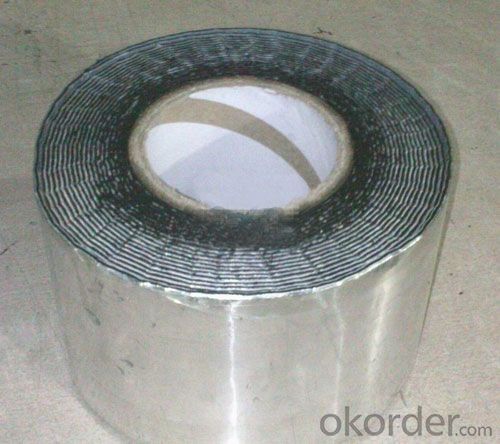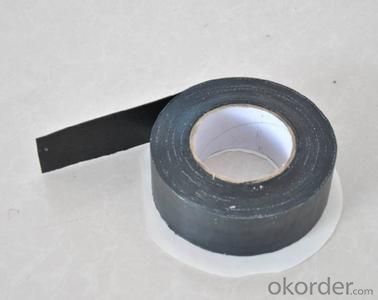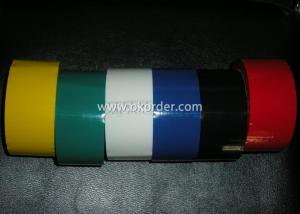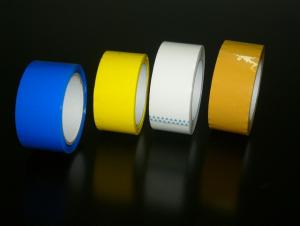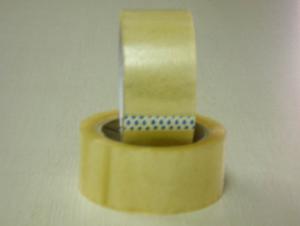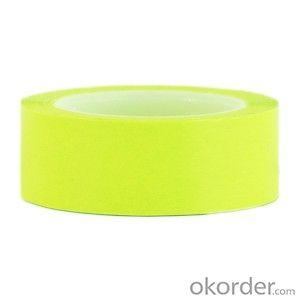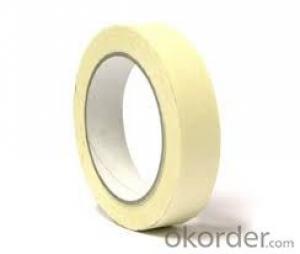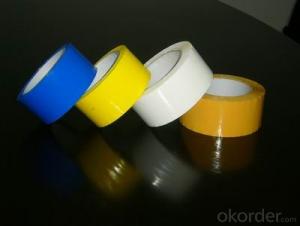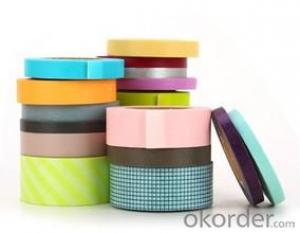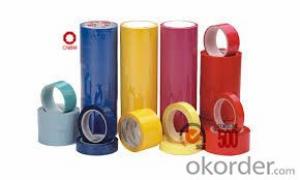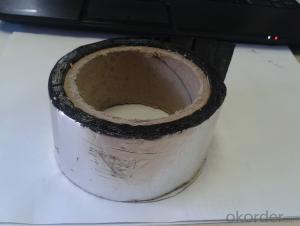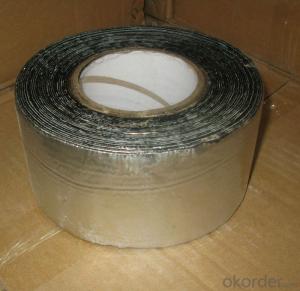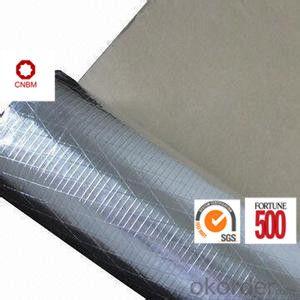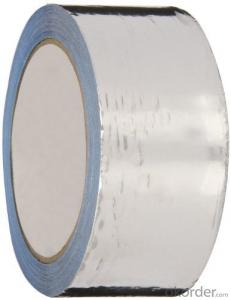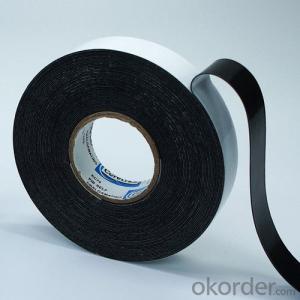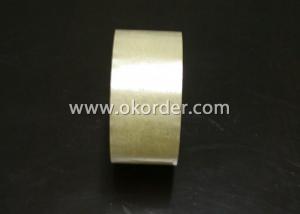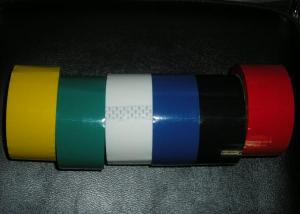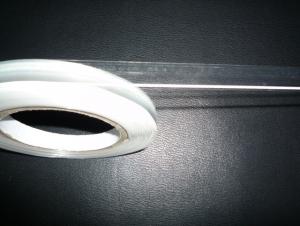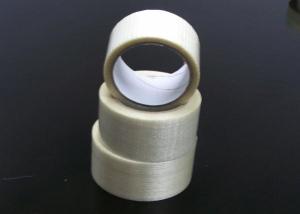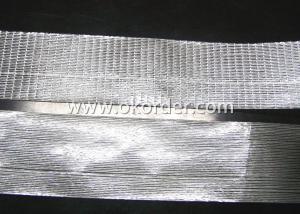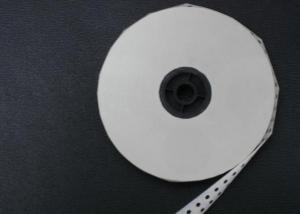Superflashing Aluminum Anti-Corrosion Cardboard Boxes Packaging Tape
- Loading Port:
- China Main Port
- Payment Terms:
- TT OR LC
- Min Order Qty:
- -
- Supply Capability:
- -
OKorder Service Pledge
OKorder Financial Service
You Might Also Like
Specifications
1.Width:50mm to 1M
2.Length:10/15/20/30M
3.Base: PE/Aluminum/HDPE
Features:
1) Cold & easy application, no pollution
2) Excellent adhesion bond
3) Good self-coalescence
4) Corrosion-resistance /aging-resistance /Hot-resistance
5) Guarantee for 15years
Requirements for surroundings:
1.The base should be dry and clean. Do not work in the rainy or snowy day.
2.Do not work under heavy wind(above 5 grade)
3.Unsuitable for construction below 0°C
4.If it is rain or snow in the process of construction, protective measure to the laid membrane is must
Package and transportation:
1. Membranes should be stored under dry and ventilated conditions.
2. Different types of membranes must be piled separately.
3. Under usual condition, storage period is one year since production date.
4. Membrane roll should be put vertically during transportation. It should be kept away from sunshine and rainwater
Our Services
1.Your inquiry related to our product & price will be replied within 24hours.
2.Well-trained & experienced staff are to answer all your inquiries in English of course.
3.Working time: 8:00am - 5:30pm, Monday to Friday
4.Your business relationship with us will be confidential to any third party.
- Q: Is packaging tape safe to use on mirrors?
- Yes, packaging tape is generally safe to use on mirrors. It is a strong and adhesive tape that is designed to securely hold items together. However, it is important to note that the type of packaging tape used can affect its safety for use on mirrors. Clear packaging tapes or tapes specifically designed for glass surfaces are typically the best options to avoid any potential damage or residue left on the mirror. Additionally, it is recommended to test a small, inconspicuous area of the mirror before applying the tape to ensure it adheres well and does not cause any damage.
- Q: Are there any eco-friendly options for packaging tape?
- In today's market, there are various eco-friendly options for packaging tape. Typically, traditional packaging tapes are made from plastic materials like polypropylene or PVC, which are harmful to the environment and not biodegradable. However, there have been developments in creating eco-friendly alternatives to tackle this issue. Some of these options include: 1. Packaging tape made from paper: These tapes are crafted from renewable resources like paper and natural adhesives. They are both biodegradable and compostable, making them a sustainable choice for packaging requirements. 2. Gummed paper tape, also known as water-activated tape: This type of tape is made from paper and requires water to activate the adhesive. It forms a strong bond when applied to boxes and provides tamper-proof sealing. Additionally, water-activated tape is biodegradable and can be recycled along with the packaging it is used on. 3. Biodegradable and compostable tape: These tapes are manufactured using plant-based materials such as cellulose or polylactic acid (PLA). They are designed to naturally break down over time, minimizing their impact on the environment. Some options are certified as compostable, meaning they can be added to compost piles or sent to composting facilities. 4. Recycled plastic tape: Although traditional plastic tapes are not environmentally friendly, there are recycled plastic tape options available in the market. These tapes are produced using recycled plastic materials, reducing the demand for new plastic and promoting a circular economy. When searching for eco-friendly packaging tape, it is crucial to consider certifications such as the Forest Stewardship Council (FSC) for paper-based tapes or the Biodegradable Products Institute (BPI) certification for compostable tapes. By opting for these alternatives, individuals and businesses can minimize their environmental impact and contribute to a more sustainable future.
- Q: What is the purpose of packaging tape?
- The purpose of packaging tape is to securely seal and reinforce packages, boxes, or containers during storage, transportation, or shipping. It is designed to provide a strong, long-lasting bond that keeps the contents of the package intact and protected. Packaging tape also serves as a visual indicator of tampering, as any unauthorized opening or tampering can be easily identified. Additionally, it helps to prevent dust, moisture, and other external elements from entering the package, ensuring the integrity and quality of the enclosed items. Overall, the purpose of packaging tape is to provide a reliable and efficient solution for sealing and protecting packages, making it an essential tool for businesses, individuals, and organizations involved in shipping and logistics.
- Q: I want to be involved in the tape industry, is the parent type their split, but do not know the parent roll cut in segmentation machine is good, or even after the parent roll processing, and also is the problem of the equipment, how much money, thank you
- Buy mother volume back, after four machines processed into finished products can be, the equipment price is: 40 thousand, -4.3 million.
- Q: Is packaging tape suitable for sealing heavy boxes?
- Yes, packaging tape is suitable for sealing heavy boxes.
- Q: Can packaging tape be used for sealing industrial or manufacturing goods?
- Indeed, packaging tape proves itself invaluable in the sealing of industrial or manufacturing goods. Its purpose is to secure and seal packages, boxes, and cartons, thus rendering it highly adaptable across a vast array of applications. In the manufacturing industry, among others, it is frequently employed to guarantee the safe transport and storage of goods. By establishing a robust and enduring seal, packaging tape effectively shields the contents from spillage, damage, or exposure to external elements like moisture or dust. Furthermore, it boasts effortless application and removal, thereby providing a convenient means of efficiently sealing substantial quantities of industrial or manufacturing goods.
- Q: Is packaging tape safe to use on delicate items?
- Packaging tape can be safe to use on delicate items, but it depends on the type of tape and how it is applied. Some packaging tapes are specifically designed for delicate items and have features like low tack adhesive or gentle release properties, which minimize the risk of damage. These tapes are often transparent and are commonly referred to as "low-tack" or "gentle" tapes. When using packaging tape on delicate items, it is important to ensure that the tape is applied carefully and securely, without excessive force or pressure. It is recommended to test the tape on a small, inconspicuous area of the item first to ensure that it does not cause any harm or leave any residue. Additionally, it is advisable to wrap delicate items with protective materials like bubble wrap or tissue paper before applying the tape, as this provides an extra layer of cushioning and protection. If you are uncertain about the safety of using packaging tape on a specific delicate item, it is always best to consult with the manufacturer or seek professional advice. They can provide guidance on the most appropriate packaging materials and methods to ensure the safety of your delicate items during transit or storage.
- Q: How do I apply packaging tape evenly?
- Achieving an even application of packaging tape can be done by following the steps below: 1. Prioritize cleanliness and ensure that the surface to be taped is free from any dust, dirt, or moisture. This will facilitate proper adhesion of the tape. 2. Determine the required length of tape and cut it accordingly. It is advisable to have a slightly longer piece of tape rather than a shorter one. 3. Firmly hold one end of the tape against the surface and apply it at a slight angle, applying gentle pressure. This technique will prevent the formation of air bubbles and ensure a smooth application. 4. As you continue applying the tape, maintain tension and keep it straight. Avoid excessively stretching or pulling the tape, as this can compromise its adhesive properties. 5. Use either your fingers or a tape dispenser to firmly press down on the tape, smoothing it out as you progress. This step guarantees proper and even adhesion to the surface. 6. In the event of encountering wrinkles or bubbles while applying the tape, gently lift it and reapply, smoothing it out as you proceed. 7. Repeat the process until the desired area is covered with the tape, ensuring a slight overlap at the edges for a secure seal. By adhering to these steps, you will be able to achieve an even application of packaging tape, resulting in a tidy and secure seal for your packages.
- Q: Is packaging tape resistant to chemicals or solvents?
- Yes, packaging tape is generally resistant to chemicals or solvents. Most packaging tapes are made from materials such as polypropylene or polyvinyl chloride (PVC) which have good chemical resistance properties. These materials are designed to withstand exposure to a wide range of chemicals and solvents commonly encountered in industrial or commercial environments. However, it is important to note that the specific resistance of packaging tape can vary depending on the brand, type, and quality of the tape. Therefore, it is always recommended to check the product specifications or consult the manufacturer for detailed information on the chemical resistance of a specific tape.
- Q: How does packaging tape perform on porous surfaces?
- Packaging tape performs relatively well on porous surfaces, although its adhesive strength may be slightly compromised compared to non-porous surfaces. The tape is designed to adhere to a variety of surfaces, including cardboard, paper, and fabric, which are commonly considered porous materials. However, due to the porous nature of these surfaces, some of the adhesive may seep into the material, reducing the bond strength. Additionally, the tape may not adhere as firmly on porous surfaces, making it more prone to peeling or lifting. It is advisable to ensure that the surface is clean and dry before applying the tape to maximize its adhesion.
Send your message to us
Superflashing Aluminum Anti-Corrosion Cardboard Boxes Packaging Tape
- Loading Port:
- China Main Port
- Payment Terms:
- TT OR LC
- Min Order Qty:
- -
- Supply Capability:
- -
OKorder Service Pledge
OKorder Financial Service
Similar products
Hot products
Hot Searches
Related keywords



